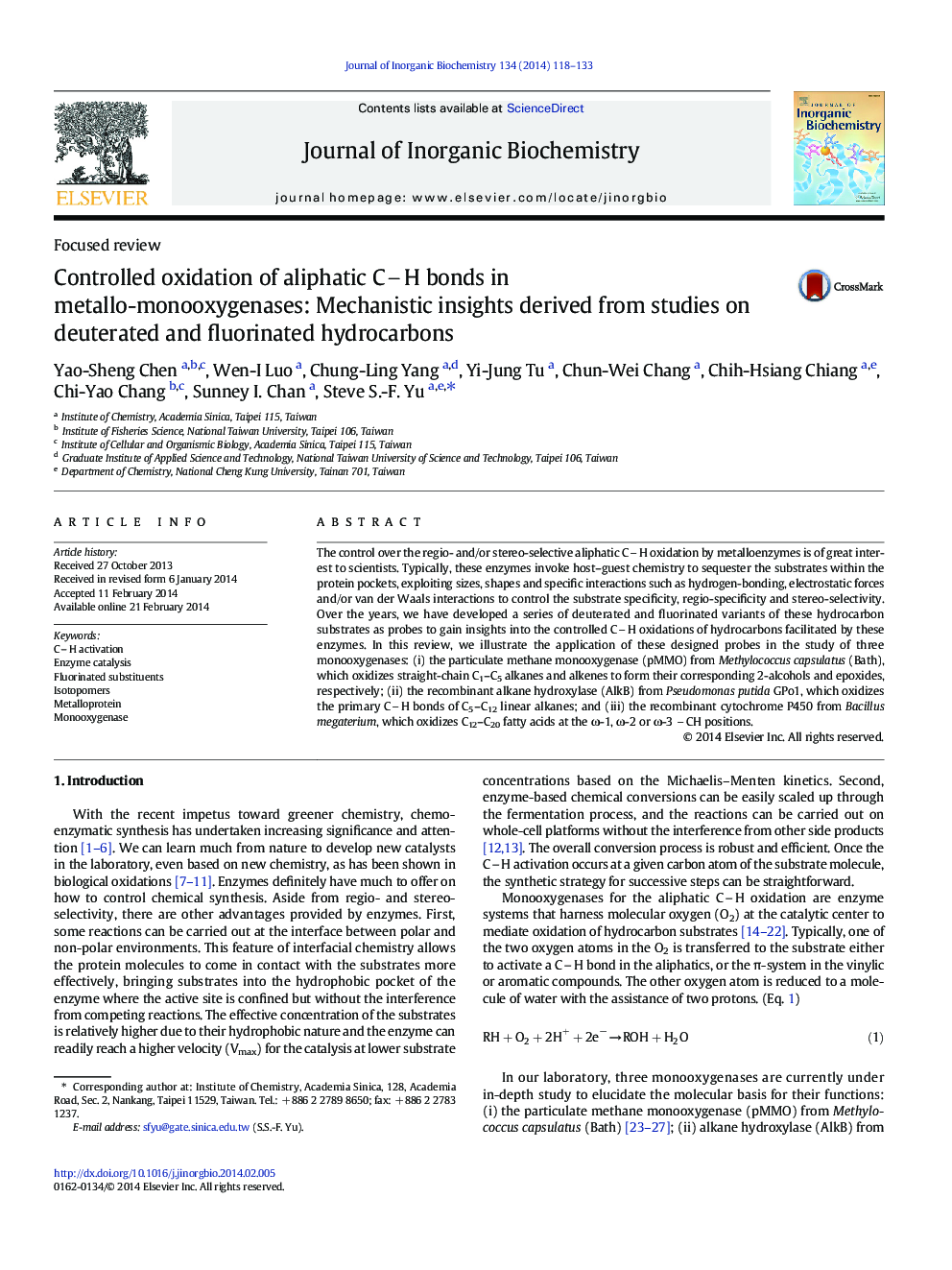| Article ID | Journal | Published Year | Pages | File Type |
|---|---|---|---|---|
| 1315940 | Journal of Inorganic Biochemistry | 2014 | 16 Pages |
The control over the regio- and/or stereo-selective aliphatic CH oxidation by metalloenzymes is of great interest to scientists. Typically, these enzymes invoke host–guest chemistry to sequester the substrates within the protein pockets, exploiting sizes, shapes and specific interactions such as hydrogen-bonding, electrostatic forces and/or van der Waals interactions to control the substrate specificity, regio-specificity and stereo-selectivity. Over the years, we have developed a series of deuterated and fluorinated variants of these hydrocarbon substrates as probes to gain insights into the controlled CH oxidations of hydrocarbons facilitated by these enzymes. In this review, we illustrate the application of these designed probes in the study of three monooxygenases: (i) the particulate methane monooxygenase (pMMO) from Methylococcus capsulatus (Bath), which oxidizes straight-chain C1–C5 alkanes and alkenes to form their corresponding 2-alcohols and epoxides, respectively; (ii) the recombinant alkane hydroxylase (AlkB) from Pseudomonas putida GPo1, which oxidizes the primary CH bonds of C5–C12 linear alkanes; and (iii) the recombinant cytochrome P450 from Bacillus megaterium, which oxidizes C12–C20 fatty acids at the ω-1, ω-2 or ω-3 CH positions.
Graphical abstractDeuterated and fluorinated hydrocarbon substrates are deployed to probe the high regio-specificity and unusual stereo-selectivity in the efficient substrate oxidization mediated by the high-valent metal active sites in three metalloproteins: particulate methane monooxygenase (pMMO), alkane hydroxylase (AlkB) and cytochrome P450 BM3.Figure optionsDownload full-size imageDownload as PowerPoint slide
